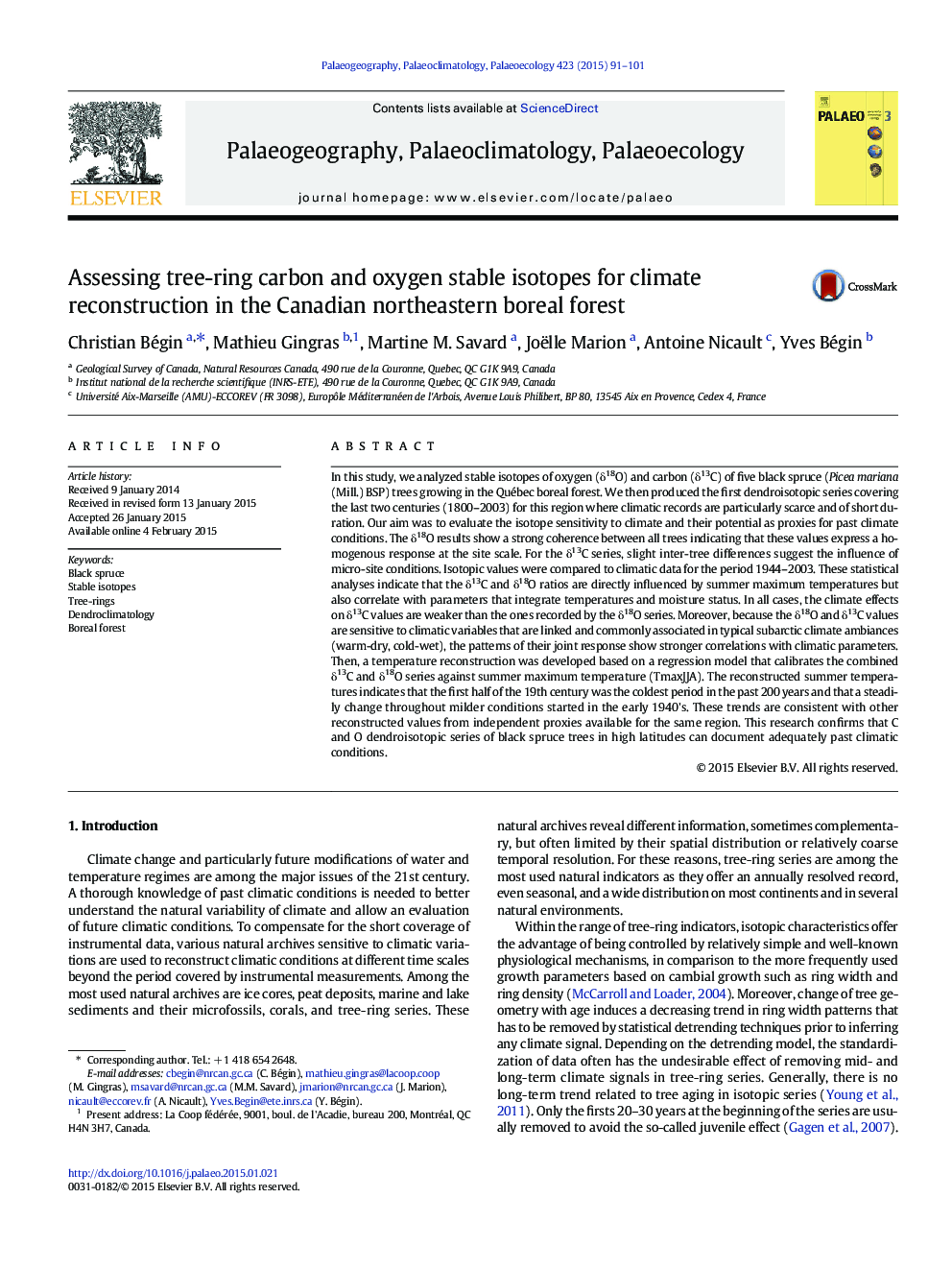| کد مقاله | کد نشریه | سال انتشار | مقاله انگلیسی | نسخه تمام متن |
|---|---|---|---|---|
| 4466043 | 1622167 | 2015 | 11 صفحه PDF | دانلود رایگان |
• We produced tree ring δ18O and δ13C series for a northeastern Canadian boreal site.
• We investigated climate signals in dendroisotopic series.
• We reconstructed summer maximum temperatures for the period of 1800–2004.
• The first half of the 19th century was the coldest period of the past 200 years.
• Trends in the reconstructed series are consistent with other available series.
In this study, we analyzed stable isotopes of oxygen (δ18O) and carbon (δ13C) of five black spruce (Picea mariana (Mill.) BSP) trees growing in the Québec boreal forest. We then produced the first dendroisotopic series covering the last two centuries (1800–2003) for this region where climatic records are particularly scarce and of short duration. Our aim was to evaluate the isotope sensitivity to climate and their potential as proxies for past climate conditions. The δ18O results show a strong coherence between all trees indicating that these values express a homogenous response at the site scale. For the δ13C series, slight inter-tree differences suggest the influence of micro-site conditions. Isotopic values were compared to climatic data for the period 1944–2003. These statistical analyses indicate that the δ13C and δ18O ratios are directly influenced by summer maximum temperatures but also correlate with parameters that integrate temperatures and moisture status. In all cases, the climate effects on δ13C values are weaker than the ones recorded by the δ18O series. Moreover, because the δ18O and δ13C values are sensitive to climatic variables that are linked and commonly associated in typical subarctic climate ambiances (warm-dry, cold-wet), the patterns of their joint response show stronger correlations with climatic parameters. Then, a temperature reconstruction was developed based on a regression model that calibrates the combined δ13C and δ18O series against summer maximum temperature (TmaxJJA). The reconstructed summer temperatures indicates that the first half of the 19th century was the coldest period in the past 200 years and that a steadily change throughout milder conditions started in the early 1940's. These trends are consistent with other reconstructed values from independent proxies available for the same region. This research confirms that C and O dendroisotopic series of black spruce trees in high latitudes can document adequately past climatic conditions.
Journal: Palaeogeography, Palaeoclimatology, Palaeoecology - Volume 423, 1 April 2015, Pages 91–101
